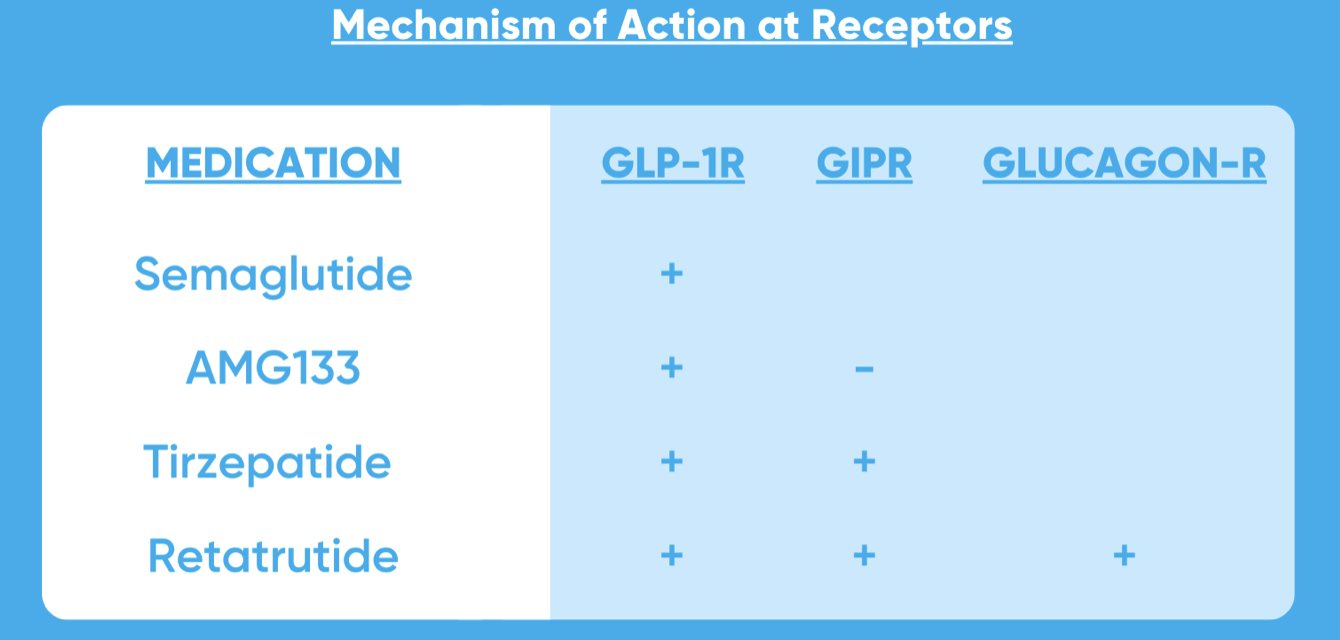Retatrutide is a promising new medication for weight management and metabolic health. As a novel GLP-1/GIP/glucagon receptor agonist, it has shown significant potential in clinical trials for treating obesity and related conditions. Many patients and healthcare providers are eager to understand the timeline for its effects. In this blog post, we'll explore how long it typically takes for Retatrutide 10mg to start working and what factors may influence its effectiveness.
What is the recommended dosage for Retatrutide?
The recommended dosage for Retatrutide 10mg is an important aspect of its effectiveness and safety profile. In clinical trials, the 10mg dose has shown promising results, but it's crucial to understand that the optimal dosage may vary depending on individual factors and treatment goals.

Typically, Retatrutide treatment begins with a lower dose and gradually increases over time. This titration approach allows the body to adapt to the medication and minimizes potential side effects. The exact titration schedule may vary, but a common approach might involve starting with a 2.5mg dose for the first month, then increasing to 5mg for the second month, and finally reaching the target dose of 10mg by the third month.
It's important to note that the 10mg dose is not necessarily the maximum or final dose for all patients. Some individuals may require higher doses to achieve optimal results, while others may respond well to lower doses. The decision to adjust the dosage should always be made in consultation with a healthcare provider who can consider the patient's individual response, tolerability, and overall health status.
Adherence to the prescribed dosage regimen is crucial for maximizing the benefits of Retatrutide. Patients should follow their healthcare provider's instructions carefully and not adjust the dose on their own. Regular follow-ups and monitoring are essential to ensure that the dosage remains appropriate throughout the treatment course.
How does Retatrutide compare to other weight loss medications?
Retatrutide 10mg represents a significant advancement in the field of weight loss medications. As a triple-action drug targeting GLP-1, GIP, and glucagon receptors, it offers a unique approach to weight management compared to earlier generations of weight loss drugs.

When comparing Retatrutide to other medications, it's important to consider both efficacy and mechanism of action. For instance, older medications like phentermine work primarily as appetite suppressants, while newer GLP-1 receptor agonists like semaglutide (Wegovy) have shown more substantial weight loss effects. Retatrutide, with its triple-action mechanism, aims to provide even greater efficacy.
In clinical trials, Retatrutide has demonstrated impressive weight loss results. Some studies have shown that patients taking Retatrutide can achieve up to 20% or more body weight reduction over the course of treatment. This is notably higher than the average weight loss seen with many other medications, which typically range from 5% to 15% of body weight.
Another key difference is the potential for metabolic improvements beyond weight loss. Retatrutide's action on multiple receptors may offer additional benefits for managing blood sugar levels, reducing cardiovascular risk factors, and improving overall metabolic health. This comprehensive approach sets it apart from single-target medications.
However, it's crucial to remember that the effectiveness of any weight loss medication can vary significantly between individuals. Factors such as diet, exercise, genetics, and overall health status all play a role in determining how well a person responds to treatment. Additionally, while Retatrutide shows promise, long-term safety and efficacy data are still being gathered, as is the case with many newer medications.
What lifestyle changes should accompany Retatrutide treatment?
While Retatrutide 10mg can be a powerful tool for weight management, it is most effective when combined with appropriate lifestyle changes. These modifications not only enhance the medication's effectiveness but also promote overall health and well-being.
Diet plays a crucial role in supporting Retatrutide treatment. Patients are typically advised to adopt a balanced, calorie-controlled eating plan. This often involves reducing portion sizes, increasing intake of fruits, vegetables, and lean proteins, and limiting processed foods and added sugars. Some patients may benefit from working with a registered dietitian to develop a personalized meal plan that aligns with their treatment goals and preferences.
Regular physical activity is another essential component of successful weight management with Retatrutide. The specific exercise recommendations may vary based on individual fitness levels and health status, but generally include a combination of aerobic activities and strength training. Starting with moderate activities like brisk walking or swimming and gradually increasing intensity and duration can help build a sustainable exercise routine.
Stress management is an often-overlooked aspect of weight loss, but it can significantly impact treatment outcomes. Chronic stress can lead to hormonal imbalances that make weight loss more challenging. Incorporating stress-reduction techniques such as meditation, yoga, or deep breathing exercises can complement the physiological effects of Retatrutide and support overall well-being.
Adequate sleep is also crucial for maximizing the benefits of Retatrutide treatment. Poor sleep quality or insufficient sleep duration can disrupt hormonal balance, increase appetite, and reduce metabolic efficiency. Aiming for 7-9 hours of quality sleep per night can help optimize weight loss efforts and overall health.
Lastly, behavioral changes and mindset shifts are important for long-term success. This may involve addressing emotional eating patterns, developing healthier coping mechanisms, and cultivating a positive body image. Some patients find that cognitive-behavioral therapy or support groups can be helpful in making and maintaining these changes.
It's important to note that these lifestyle modifications should be implemented gradually and sustainably. Drastic changes are often difficult to maintain long-term and can lead to frustration or burnout. Working closely with healthcare providers to develop a comprehensive treatment plan that includes both medication and lifestyle components can greatly enhance the chances of achieving and maintaining weight loss goals with Retatrutide.
If you are also interested in this product and want to know more product details, or want to know about other related products, please feel free to contact sasha_slsbio@aliyun.com.
References
- Rosenstock J, et al. Efficacy and safety of a novel dual GIP and GLP-1 receptor agonist tirzepatide in patients with type 2 diabetes (SURPASS-1): a double-blind, randomised, phase 3 trial. Lancet. 2021.
- Frías JP, et al. Tirzepatide versus Semaglutide Once Weekly in Patients with Type 2 Diabetes. N Engl J Med. 2021.
- Jastreboff AM, et al. Tirzepatide Once Weekly for the Treatment of Obesity. N Engl J Med. 2022.
- Nauck MA, Meier JJ. GIP and GLP-1: Incretin Hormones With Distinct Effects on Metabolism. Diabetes Care. 2022.
- Ludvik B, et al. Once-weekly tirzepatide versus once-daily insulin degludec as add-on to metformin with or without SGLT2 inhibitors in patients with type 2 diabetes (SURPASS-3): a randomised, open-label, parallel-group, phase 3 trial. Lancet. 2021.
- American Diabetes Association. Standards of Medical Care in Diabetes—2023. Diabetes Care. 2023.
- Wilding JPH, et al. Once-Weekly Semaglutide in Adults with Overweight or Obesity. N Engl J Med. 2021.
- Müller TD, et al. GLP-1 and GIP Dual Agonist for the Treatment of Obesity and Diabetes. Annu Rev Pharmacol Toxicol. 2022.
- Buse JB, et al. 2019 Update to: Management of Hyperglycemia in Type 2 Diabetes, 2018. A Consensus Report by the American Diabetes Association (ADA) and the European Association for the Study of Diabetes (EASD). Diabetes Care. 2020.
- Rossi M, et al. Gastrointestinal Peptides, Appetite, and Food Intake in Health and Obesity. Nutrients. 2021.

